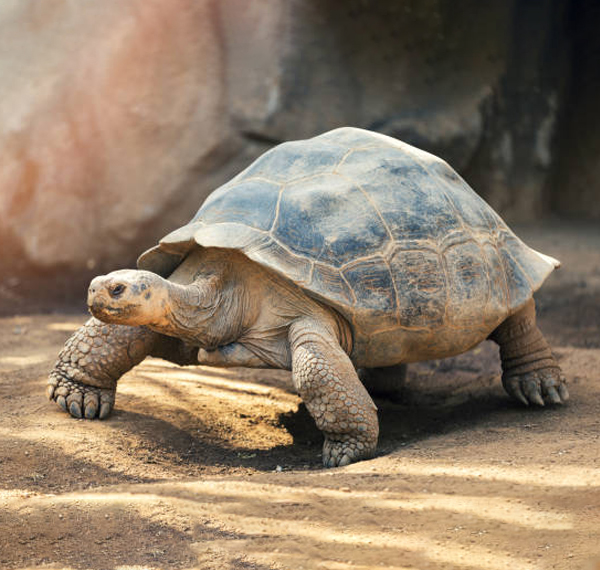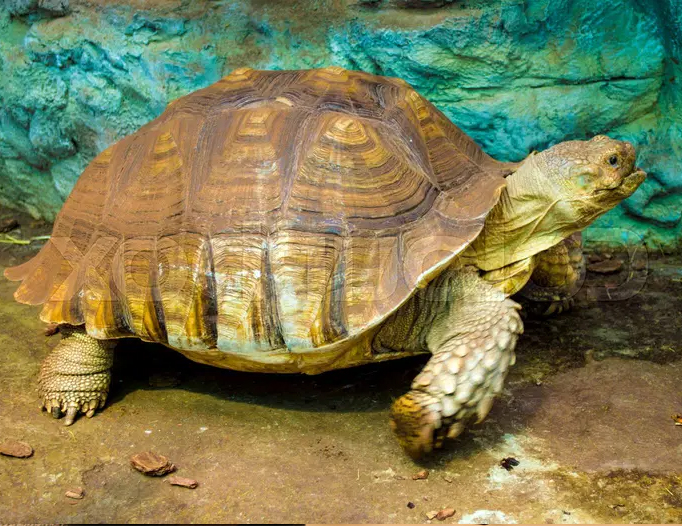Total Weight
Height
Diet
Lifespan
Total Weight
Height
Diet
Lifespan
Turtles are fascinating, ancient reptiles found across oceans, rivers, lakes, and forests worldwide. Known for their protective shells and slow, deliberate movements, turtles have adapted to thrive in diverse habitats, from sandy beaches to freshwater wetlands and even urban areas. These calm, resilient creatures play vital roles in their ecosystems by maintaining healthy aquatic environments and balancing food chains.
The journey of turtles at Patna Zoo began in 1986, when the zoo welcomed its first Indian Flapshell Turtles rescued from local wetlands. Over the years, the zoo became home to a variety of turtle species, including the Indian Star Tortoise and Ganges Softshell Turtle, many of which were rescued from illegal wildlife trade or found injured in the wild.


The turtle habitat at Patna Zoo is a well-designed space that closely resembles the natural environment turtles thrive in. It features shallow water pools, sandy areas, and aquatic plants, providing a comfortable and enriching setting for the turtles. The enclosure is securely enclosed to ensure the safety of both turtles and visitors while allowing ample room for the turtles to move, bask, and explore.
The habitat also includes basking platforms and shaded spots, giving turtles a choice between sun exposure and cooler areas, which supports their thermoregulation. Informative signboards placed around the enclosure educate visitors about different turtle species, their ecological importance, and ongoing conservation efforts.
Discover the graceful turtle, a symbol of longevity and resilience, thriving in its natural habitat.
Explore diverse aquatic environments and uncover the secrets of one of the planet’s most fascinating and enduring creatures at Patna Zoo.
| Attribute | Details |
|---|---|
| Weight | Most adult turtles weigh between 5 to 300 kg, depending on the species, with some sea turtles reaching even higher weights. |
| Height | Turtles can range from 20 cm to over 1.5 meters, with large sea turtles like the leatherback growing the longest. |
| Diet | Turtles have varied diets — some are herbivores, feeding on plants, algae, and fruits, while others are omnivores, consuming insects, fish, mollusks, and aquatic vegetation. |
| Lifespan | Turtles are known for their longevity, with lifespans ranging from 30 to over 100 years, depending on species and habitat. |
| Conservation Status | Conservation status varies widely — some species are listed as Least Concern, while others, especially sea turtles, are classified as Endangered or Critically Endangered. |
| Population in the Wild | Population numbers fluctuate across species, with many facing declines due to habitat loss, pollution, and illegal trade. |
| Social Structure | Turtles are mostly solitary creatures, coming together mainly for mating or during basking in communal areas. |
| Unique Behavior | Many turtles bask in the sun to regulate body temperature, while some species migrate long distances between feeding and nesting grounds. |
| Feeding Pattern | Feeding habits depend on the species — some graze throughout the day, while others hunt or forage opportunistically. |
| Shell Feature | Turtles are easily recognized by their protective shell, made of bony plates covered by scutes, which offers defense against predators. |
| Closest Relatives | Turtles belong to the order Testudines and are closely related to tortoises and terrapins, forming a distinct group of reptiles. |
Turtles have diverse diets, which vary depending on the species and habitat they live in. Some turtles are herbivores, feeding primarily on aquatic plants, algae, and fruits, while others are omnivores, eating a mix of plants, insects, fish, and small aquatic animals.
In certain environments, turtles may also feed on carrion, helping clean up their habitats by eating decaying organic matter. Their slow-moving nature means they often rely on grazing or scavenging rather than active hunting.
Aquatic turtles are particularly skilled at foraging underwater, using their sharp beaks to tear apart food. On land, terrestrial turtles search for low-lying vegetation, fruits, and occasional insects to meet their dietary needs.
In times when food is scarce, some turtles can slow their metabolism, allowing them to survive on limited resources for extended periods.
Open Now
All visits to Patna Zoo help fund our work both at the zoo and worldwide.